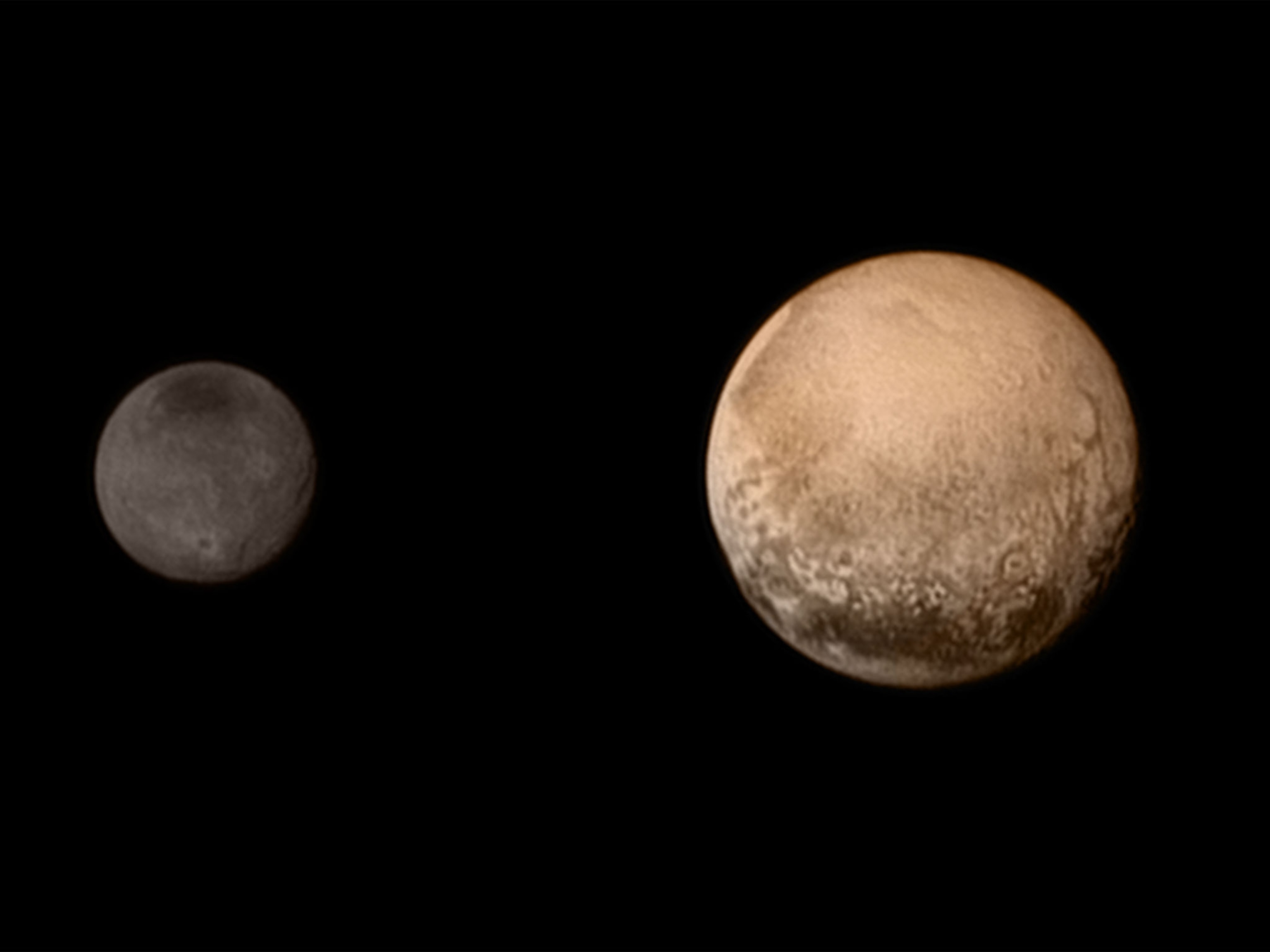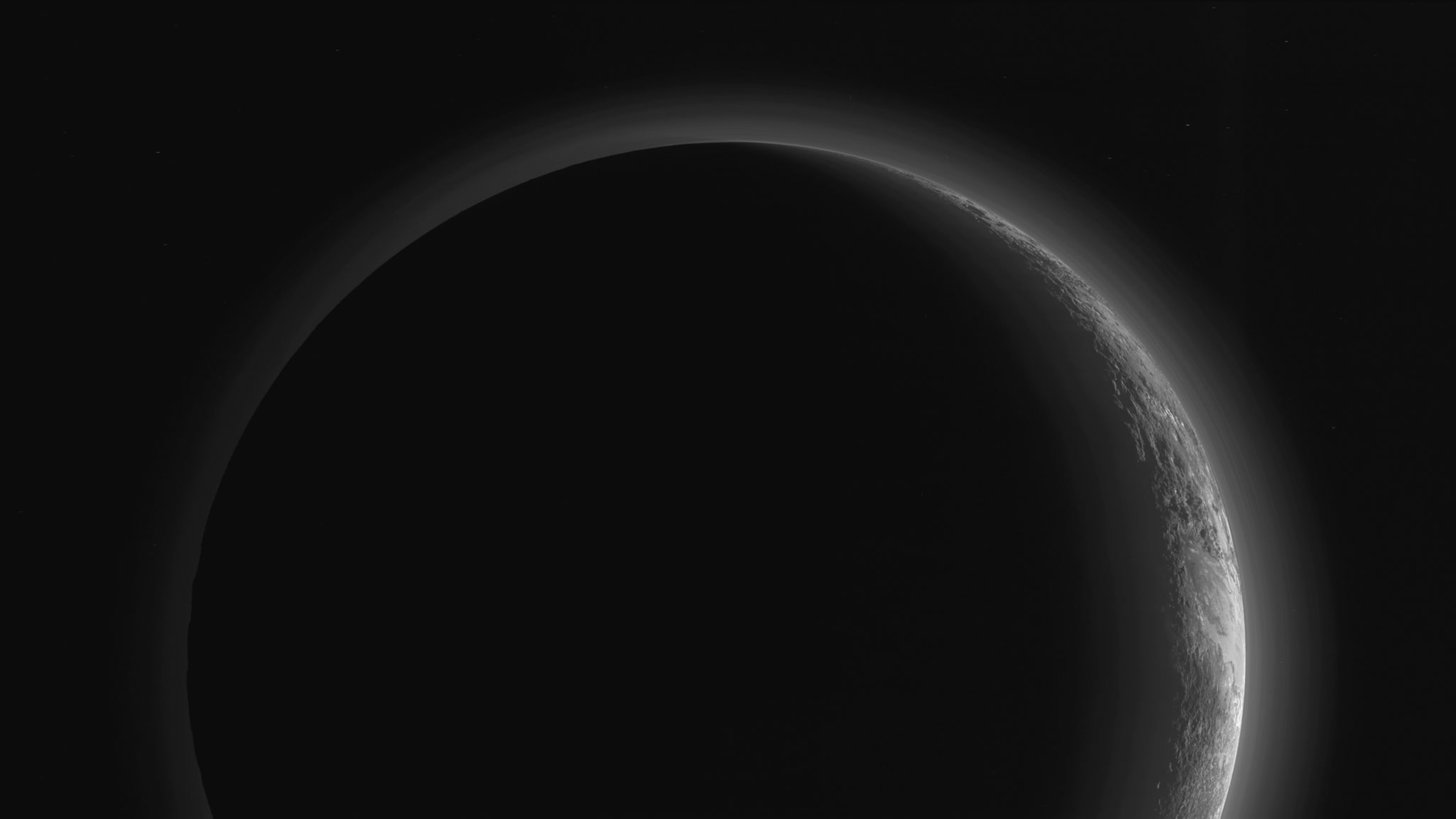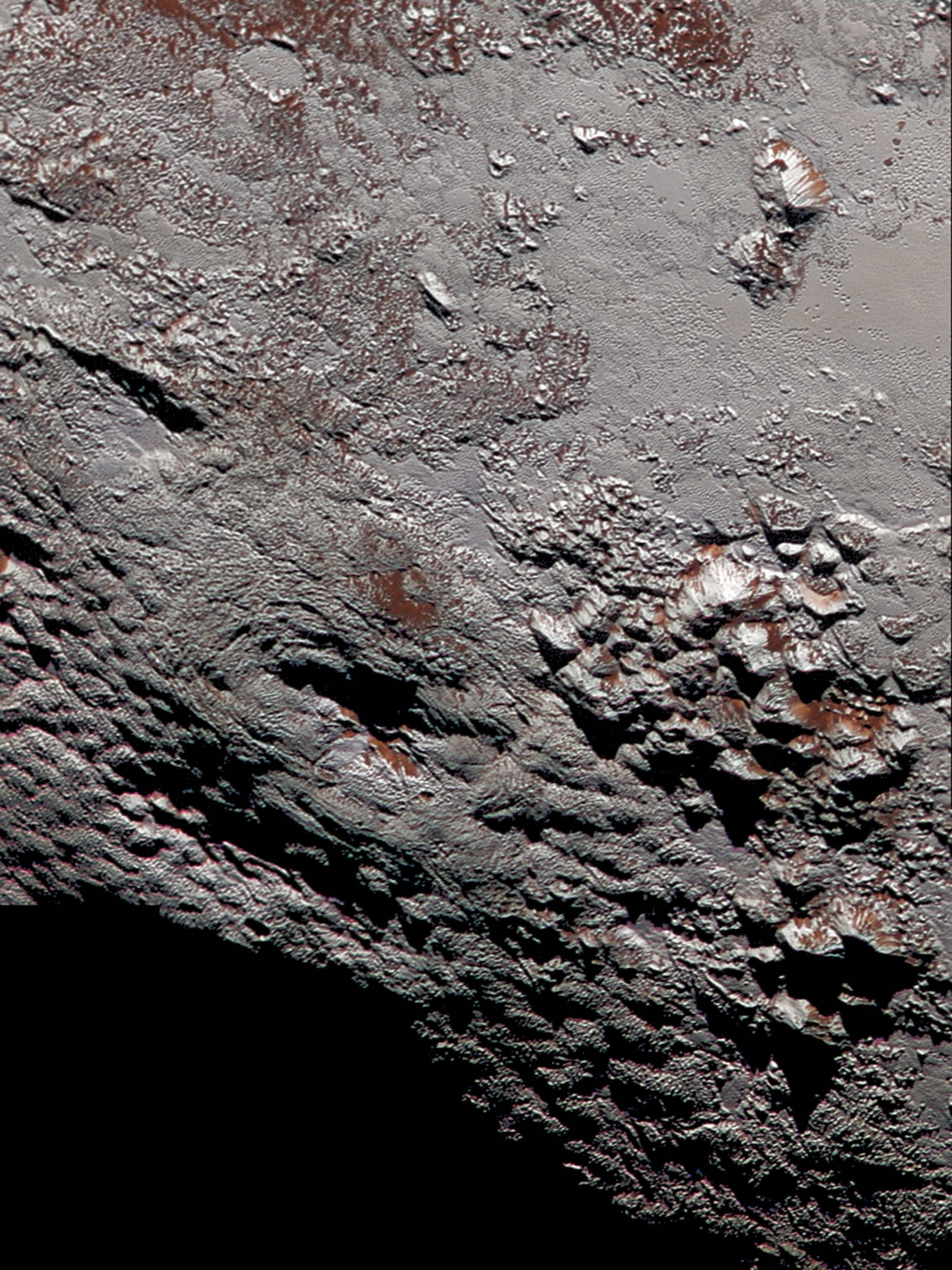On the dwarf planet Ceres—the largest body in the asteroid belt—icy volcanic activity may be a regular occurrence rather than a puzzling anomaly. New observations, reported today in Nature Astronomy, suggest that the small world has been continually erupting over the past billion years, although its volcanism has spewed substantially less material than the volcanoes on Earth, Mars, or Venus.
Though the evidence for widespread volcanism is strong, scientists are still perplexed by what is fueling those eruptions.
“We do not really know,” says the European Space Agency’s Ottaviano Ruesch, who was not involved in the study. “A new space mission to this dwarf planet would probably tell us that.”
Stretching roughly 600 miles across, Ceres is the only dwarf planet in the asteroid belt, the ribbon of space rocks scattered between the orbits of Mars and Jupiter. Since March 2015, NASA’s Dawn spacecraft has orbited the frozen, round world, taking a close look at its icy terrains and startling bright spots.
But several months after pulling into orbit, Dawn spotted something truly odd: a tall, pyramidal feature reaching more than 13,000 feet above the cratered surface. It looked for all the world like a young volcano. But how could there be a volcano on Ceres, a world suspected of being geologically dead?
And perhaps more confusingly, why was there only one young volcano? After orbiting the sun for 4.5 billion years, why would Ceres suddenly, recently, become volcanically active?
Ice Volcanoes
Scientists named the feature Ahuna Mons, and in 2016 announced that it was, indeed, a volcano. But instead of erupting fire and brimstone, it likely oozes frozen lava made up of ices, salts, and other materials. That’s because temperatures inside Ceres are too cold to melt rock, says Ruesch, an author on the paper that identified Ahuna Mons as a cryovolcano.
“The temperature was, however, high enough to melt ice,” he says.
Icy volcanic eruptions might sound weird, but Ahuna Mons is far from being the only so-called cryovolcano in the solar system. Cryovolcanism has been spotted on the moons Enceladus, Europa, and Triton and arguably on several other worlds in the outer solar system; scientists think those eruptions are powered by the bodies’ internal heat, which, in the case of some moons, is generated by gravitational interactions with their home planets. And on some of these worlds—notably Enceladus and Europa—the geysers and plumes that result from cryovolcanism provide some of the best places to look for life beyond Earth, because they bring materials from buried, potentially life-friendly reservoirs to the surface.
However, scientists didn’t know about this type of cryovolcanic activity until the Voyager spacecraft zoomed by Triton in 1989 and snapped photos suggesting that icy geysers erupted from the moon’s surface.
“We really have come a very long way, and we understand that cryovolcanism is probably much more common than we imagine,” says Rosaly Lopes of NASA’s Jet Propulsion Laboratory, who was not involved in the study. “But it’s pretty puzzling, because the mechanisms are not well understood.”
Lonely Mountain
The same is true for Ceres, where no obvious mechanism has been uncovered. And particularly enigmatic, at least in the beginning, was Ahuna Mons’s solitude. It was the lone peak observed on many flights around the dwarf planet. More confounding is the fact that it appears to be about 200 million years old, which is incredibly young, geologically speaking.
Related Pictures: See Pluto Get More Amazing Through Time


















Given that volcanic activity on other bodies in the inner solar system generally wanes over time as their interiors cool, as is the case on Venus, Mars, and Earth’s moon, it doesn’t make sense for 4.5-billion-year-old Ceres to have suddenly become cryovolcanic within the last geologic finger snap, says study author Michael Sori of the University of Arizona.
“It’s pretty difficult to come up with a reason why Ceres, or any other body, would be volcanically dead for the first 99 percent of its life and then all of a sudden turn on yesterday, relatively speaking,” Sori says. “There must be some process that erases older volcanoes—that Ceres has been geologically active for maybe its whole lifetime, but something gets rid of the older constructs.”
With this hypothesis in mind, Sori and his colleagues went looking for features on the Cererean surface that could be older, deformed volcanoes; simulations suggested these soft, icy features would look like relaxed domes or mountains that have slumped with time.
Ancient Eruptions
The team found more than three dozen plausible cryovolcanic domes. After eliminating icy suspects that weren’t particularly strong candidates, scientists settled on 22 domes that suggest cryovolcanic activity. One of these is Ahuna Mons. The rest are each between 10 and 50 miles wide, with some reaching more than 2.5 miles above the surface. The team tentatively determined them to be less than a billion years old, but this estimate is tricky because of the domes’ relatively small sizes.
“We tried to be conservative in our choices, and that probably means we’re preferentially seeing the younger ones, because the older ones are more beat up and harder to measure,” Sori says.
The observations mean it’s likely that over the past billion years, Ceres has grown a new cryovolcano every 50 million years, on average.
It’s a finding that intrigues and delights Lopes: “We have always been somewhat puzzled about why Ahuna Mons was the only cryovolcanic construct on Ceres,” she says. “This work builds on the idea that these domes relax over long periods of time, so they are no longer obvious.”
The results suggest that although Ceres has been continually cryovolcanic for at least the past billion years, the amount of eruptive activity is but a fraction of what we see on Earth, and much less than what we suspect has occurred on Mars and Venus.
Intuitively, this makes sense. Ceres’s innards are nowhere near as hot as those of the inner planets, and it’s all by itself out there in the asteroid belt. So the mechanism, or the energy source behind the eruptions on cold, lonely Ceres is still a big question mark that Sori and his colleagues are aiming to resolve.
“To me,” he says, “that is the next really big thing to figure out, and I don’t have a perfect answer yet.”
You May Also Like
Go Further
Animals
- Octopuses have a lot of secrets. Can you guess 8 of them?
- Animals
- Feature
Octopuses have a lot of secrets. Can you guess 8 of them? - This biologist and her rescue dog help protect bears in the AndesThis biologist and her rescue dog help protect bears in the Andes
- An octopus invited this writer into her tank—and her secret worldAn octopus invited this writer into her tank—and her secret world
- Peace-loving bonobos are more aggressive than we thoughtPeace-loving bonobos are more aggressive than we thought
Environment
- This ancient society tried to stop El Niño—with child sacrificeThis ancient society tried to stop El Niño—with child sacrifice
- U.S. plans to clean its drinking water. What does that mean?U.S. plans to clean its drinking water. What does that mean?
- Food systems: supporting the triangle of food security, Video Story
- Paid Content
Food systems: supporting the triangle of food security - Will we ever solve the mystery of the Mima mounds?Will we ever solve the mystery of the Mima mounds?
- Are synthetic diamonds really better for the planet?Are synthetic diamonds really better for the planet?
- This year's cherry blossom peak bloom was a warning signThis year's cherry blossom peak bloom was a warning sign
History & Culture
- Strange clues in a Maya temple reveal a fiery political dramaStrange clues in a Maya temple reveal a fiery political drama
- How technology is revealing secrets in these ancient scrollsHow technology is revealing secrets in these ancient scrolls
- Pilgrimages aren’t just spiritual anymore. They’re a workout.Pilgrimages aren’t just spiritual anymore. They’re a workout.
- This ancient society tried to stop El Niño—with child sacrificeThis ancient society tried to stop El Niño—with child sacrifice
- This ancient cure was just revived in a lab. Does it work?This ancient cure was just revived in a lab. Does it work?
- See how ancient Indigenous artists left their markSee how ancient Indigenous artists left their mark
Science
- Jupiter’s volcanic moon Io has been erupting for billions of yearsJupiter’s volcanic moon Io has been erupting for billions of years
- This 80-foot-long sea monster was the killer whale of its timeThis 80-foot-long sea monster was the killer whale of its time
- Every 80 years, this star appears in the sky—and it’s almost timeEvery 80 years, this star appears in the sky—and it’s almost time
- How do you create your own ‘Blue Zone’? Here are 6 tipsHow do you create your own ‘Blue Zone’? Here are 6 tips
- Why outdoor adventure is important for women as they ageWhy outdoor adventure is important for women as they age
Travel
- This town is the Alps' first European Capital of CultureThis town is the Alps' first European Capital of Culture
- This royal city lies in the shadow of Kuala LumpurThis royal city lies in the shadow of Kuala Lumpur
- This author tells the story of crypto-trading Mongolian nomadsThis author tells the story of crypto-trading Mongolian nomads
- Slow-roasted meats and fluffy dumplings in the Czech capitalSlow-roasted meats and fluffy dumplings in the Czech capital








